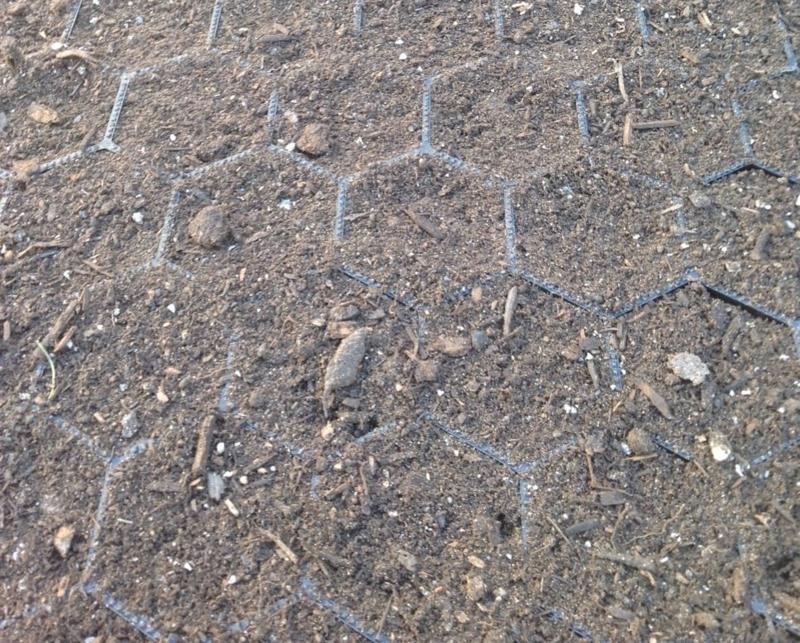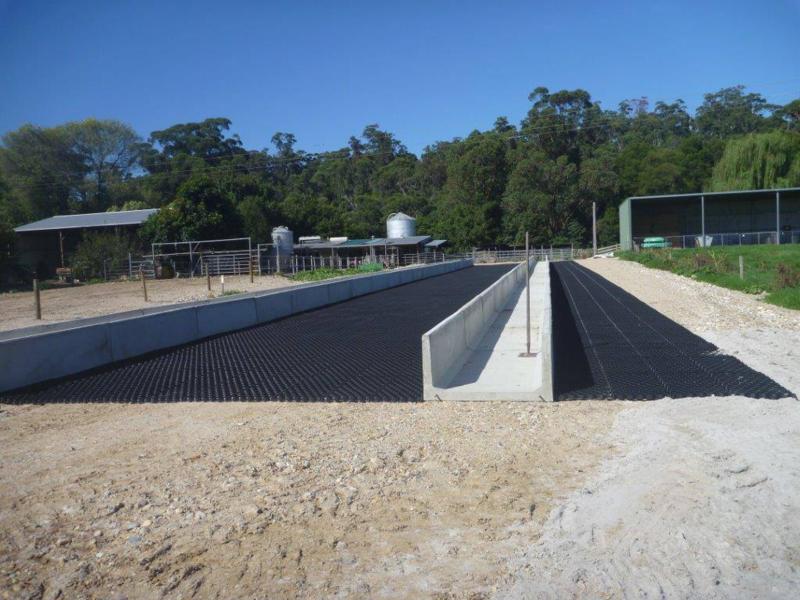WHEN the weather turns and the rain soaks in, herds of cattle can risk injury when they’re all trying to get into the feed troughs at once. Add to that daily movement of tractors and a safe area can quickly turn into a bog. It’s vital to give livestock a steady platform to feed and move around freely – and a solution is here.
A 300-head dairy at Cameron Farm, Orbost in Victoria continually experienced problems with soil erosion and flooding. They had tried concrete, but it was expensive, cracked quickly and was harsh on cattle hooves. The owners decided to research a solution, and came across a company called Geohex, which promised a solution that would do the same job as concrete, without all those problems.
Geohex proved to be much more effective and cheaper to install. With plastic matting construction and a clever connection system, the fitting process was surprisingly simple with little ground preparation needed.

The lightweight material was laid in a matter of hours, using linear and bend sections to piece the puzzle together around the farm’s most hazardous erosion points.
The dairy farmer’s main concerns were around cattle feed and drinking troughs, the laneway where dairy cows travelled each day and the nasty ruts created from tractor tires when carting hay to feeder troughs.
3 STEPS TO IMPROVE GROUND STABILITY
- Scrape, fill, compact and level soil with gravel.
- Lay out the panels around key erosion areas.
- Fill panels with compacted crusher dust.
This soil erosion system is Australian made with recycled materials and a maximum load bearing capacity of 1,200 tonnes/square metre. It assists with overall water conservation, like soil subsidence, bogging and water run-off, and can easily be moved from one area of the farm to another.

Another farmer who visited the Victorian dairy copied the idea for his own farm, which had a steep long and winding driveway. The soil here was constantly being eroded by rain and tyres – and this system fit the bill instantly.
The erosion system creates a stiffened base layer that provides increased load support for grassed areas, edge of roads, embankments or parking places prone to regular traffic, whether that be cars, farm machinery or moving livestock.
LONG-TERM BENEFITS FOR FARMING
- Enables maximum use of agricultural land
- Promotes ground and turf stabilisation
- Reduces surface water runoff and promotes water conservation
- Can be laid in any weather conditions
- Minimal ground preparation required
- Cost-effective, lightweight and long-lasting materials
- Helps control soil erosion and stormwater drainage
- Sediment control technology
- Reduces labour and machinery costs
- Nests together when in transit (136 sqm/pallet)
The owners of the dairy were impressed by Geohex. The feed pad held up well in the months after installation and they found it quite easy to scrape excess manure off to see whether more crusher dust was needed and it was fast to remove and transport elsewhere.
Overall they’ve saved themselves money and brought piece of mind back on farm knowing their cattle have their feet firmly on the ground.
*To find out more about how to reduce on-farm erosion and enhance livestock safety when winter feeding call 02 9603 5322.
Sponsored content for
Geohex.